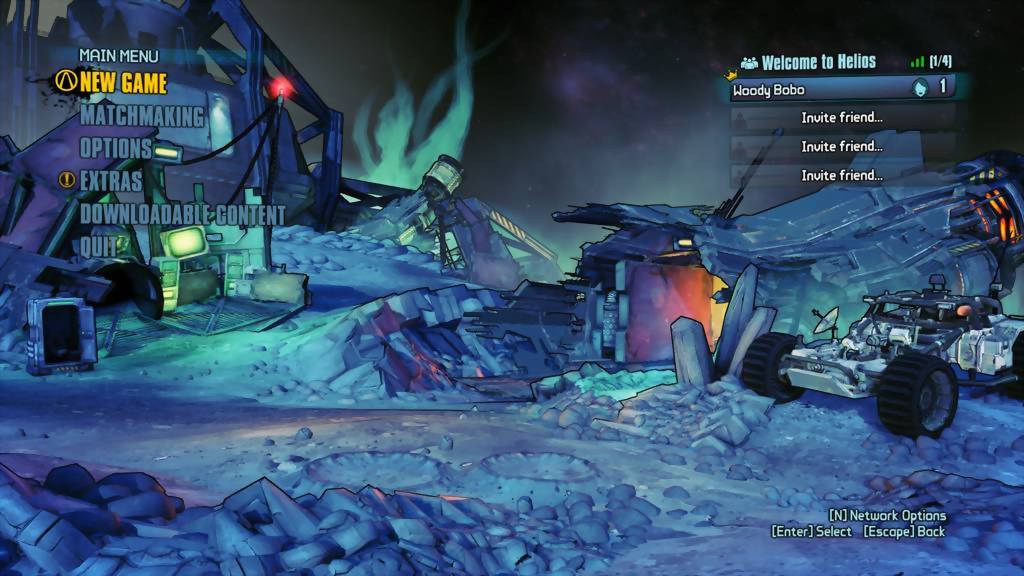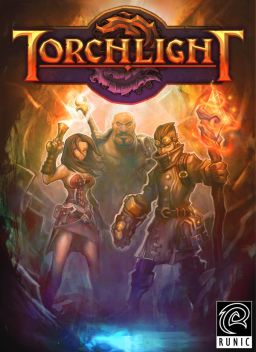Tiny Tina's Wonderlands
Jan. 8th, 2024 11:08 pm
Dragon Quest of The Fatemaker
I discovered the Gearbox Software-developed Borderlands series during the last decade, becoming enamored with its combination of first-person shooter and RPG gameplay to the point where I happily replayed the titles on multiple consoles to which they were ported, among them being those for Steam via my trusty Steam Deck. One of the expansion packs for the second game featured the story character Tiny Tina leading a Dungeons & Dragons-esque fantasy campaign setting, for which Gearbox would develop a successor and Borderlands spinoff entitled Tiny Tina’s Wonderlands, which provides an experience on par with the main entries.

Upon starting a new game, the player must create a character termed The Fatemaker, who can be of one of several different classes. The gameplay remains like the main Borderlands games, with the player able to wield up to four firearms of various types (initially two), wear different item enhancements, and use a skill inherent to The Fatemaker’s class that needs to recharge. The spinoff’s “Save Your Soul” system also mimics the main series’ “Fight For Your Life” mechanics of being able to kill an enemy after losing all health to revive, failure resulting in revival at the last checkpoint and losing some money.
There are a few differences, which include the ability to wield melee weapons, cast magic that requires time to recharge, and, upon reaching a certain level, being able to select a secondary class that grants The Fatemaker an additional Skill Tree alongside their base one. As in the Borderlands games, leveling nets the player a skill point they can put into one of The Fatemaker’s skill trees, alongside a point they can invest into one of their base stats. The looter shooter mechanics work well as in the mainline Borderlands games, with some quirks like not needing to repeat phases of multiphase boss battles like that against the final boss. However, issues still carry over, like needing a steady trigger finger and losing all health without an enemy to kill to revive.
Wonderlands’ main weaknesses lie in its control. While there are a few improvements over the Borderlands games, like the in-game maps being three-dimensional and rotatable, which accommodates the multilayered stages, many areas are of questionable design to where I didn’t bother with whatever sidequest objectives were there. However, positive aspects from the main Borderlands titles return, like fast travel and objective markers, another improvement being that saving and quitting the game most of the time preserves The Fatemaker’s location. Still, other issues exist, including glitches (with objective markers occasionally disappearing in my playthrough) and unskippable voiced dialogue (which seems endemic to Western RPGs), and the game’s usability could have been better.

Narratively, Wonderlands is a parodic take on fantasy-themed RPGs, with plenty of humor (although some of it is toiletic) and references galore to other media such as the Star Wars franchise and the Smurfs. The campaign setting backstory is also well written, with some of it revealed through scrolls obtained throughout the game world. There are some areas where the writers could have been more creative, like calling the main antagonist something other than “Dragon Lord." Moreover, given the unskippable voiced text, the narrative frequently feels forced down the player’s throat. Regardless, the plot is an enjoyable draw to the spinoff.
While some nice tracks fit the game’s fantasy setting, most of the music is unmemorable, aside from a vocal theme song played during the ending credits. However, the voice performances are largely superb, including Ashly Burch as the titular game master, Will Arnett as the Dragon Lord, and comedienne Wanda Sykes as Frette the robot, one of the tabletop RPG’s players. Regardless, a dearth of memorable music seems endemic to most Western roleplaying games.
Like the main Borderlands titles, Wonderlands utilizes a cel-shaded visual style, which looks fantastic and even more colorful in its fantasy setting, with only a few minor issues regarding choppiness and collision detection.
Finally, the spinoff is about on par with the main series regarding playtime, around forty-eight hours, with plenty of lasting appeal through different difficulty settings, achievements, sidequests, various classes, the myriad sidequests, a playable epilogue, and so forth.
In summation, Tiny Tina’s Wonderlands is an enjoyable offshoot of the Borderlands franchise, keeping what has been fun about the looter shooter series while introducing some new elements and occasional improvements. The lighthearted writing often stands out, as do the voice performances, pretty graphics, and the deluge of supplemental content. However, many of the issues from its parent series recur, like a necessary trigger finger, some annoying glitches, occasional irritating level design, the unskippable voiced dialogue, and the lack of memorable music. Regardless, fans of first-person shooters owe it to themselves to chance this excellent spinoff.
This review is based on a playthrough of a digital copy downloaded to the reviewer's Steam Deck and played with the Dock on a television, Clawmancer as his beginning class.
| Score Breakdown | |
|---|---|
| The Good | The Bad |
|
|
| The Bottom Line | |
| A great Borderlands spinoff. | |
| Platform | Steam |
| Game Mechanics | 9.0/10 |
| Control | 6.5/10 |
| Story | 8.0/10 |
| Aurals | 8.5/10 |
| Visuals | 9.0/10 |
| Lasting Appeal | 10/10 |
| Difficulty | Adjustable |
| Playtime | 48+ Hours |
| Overall: 8.5/10 | |









